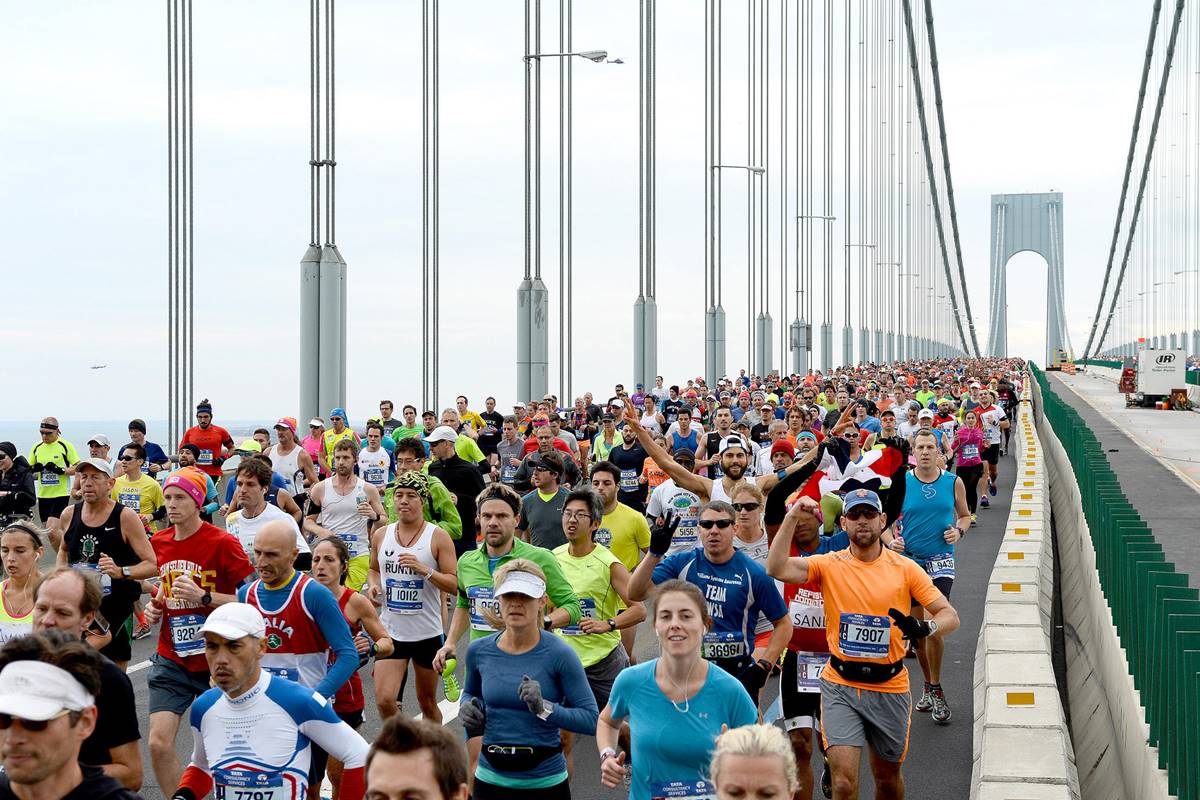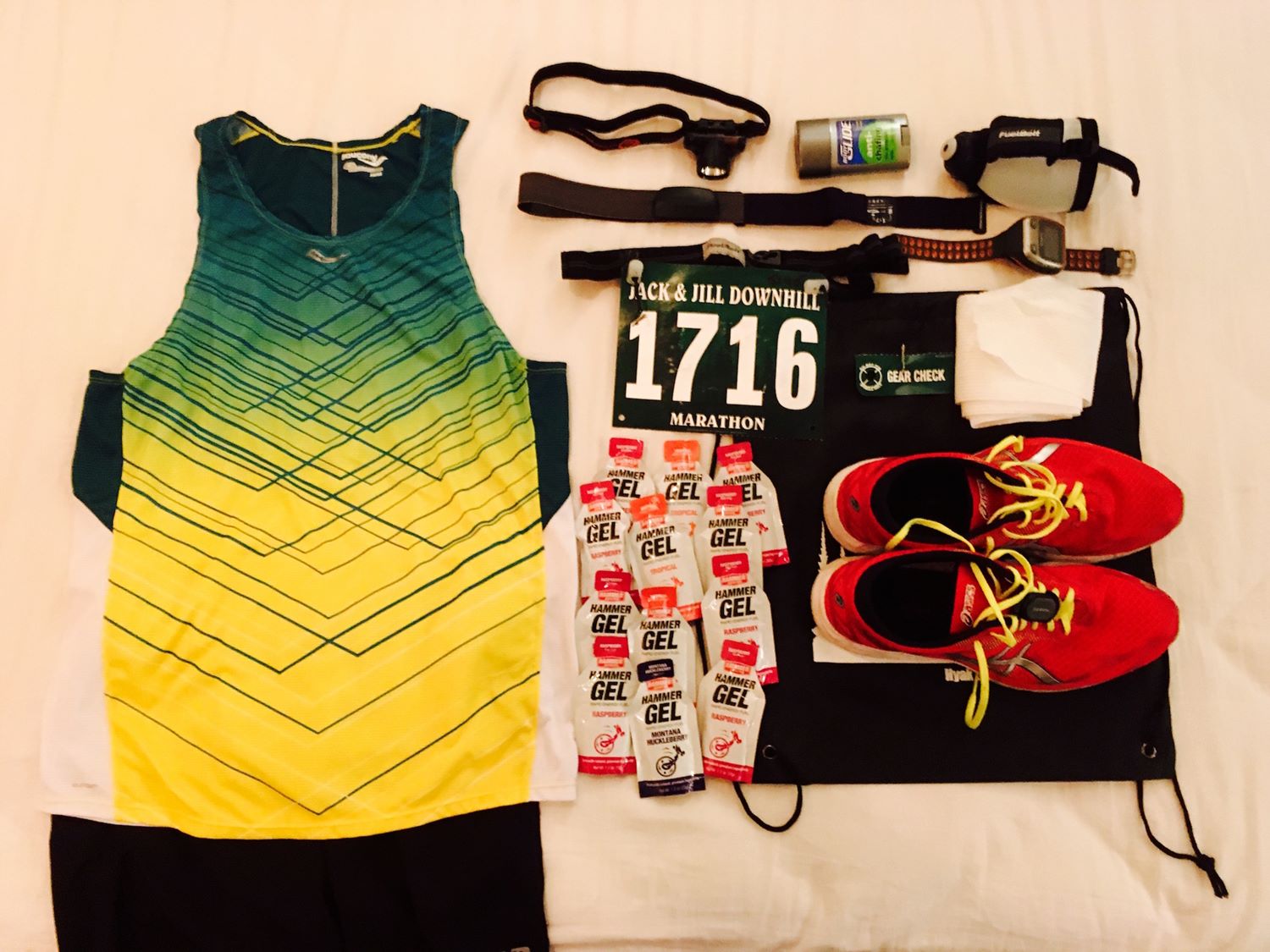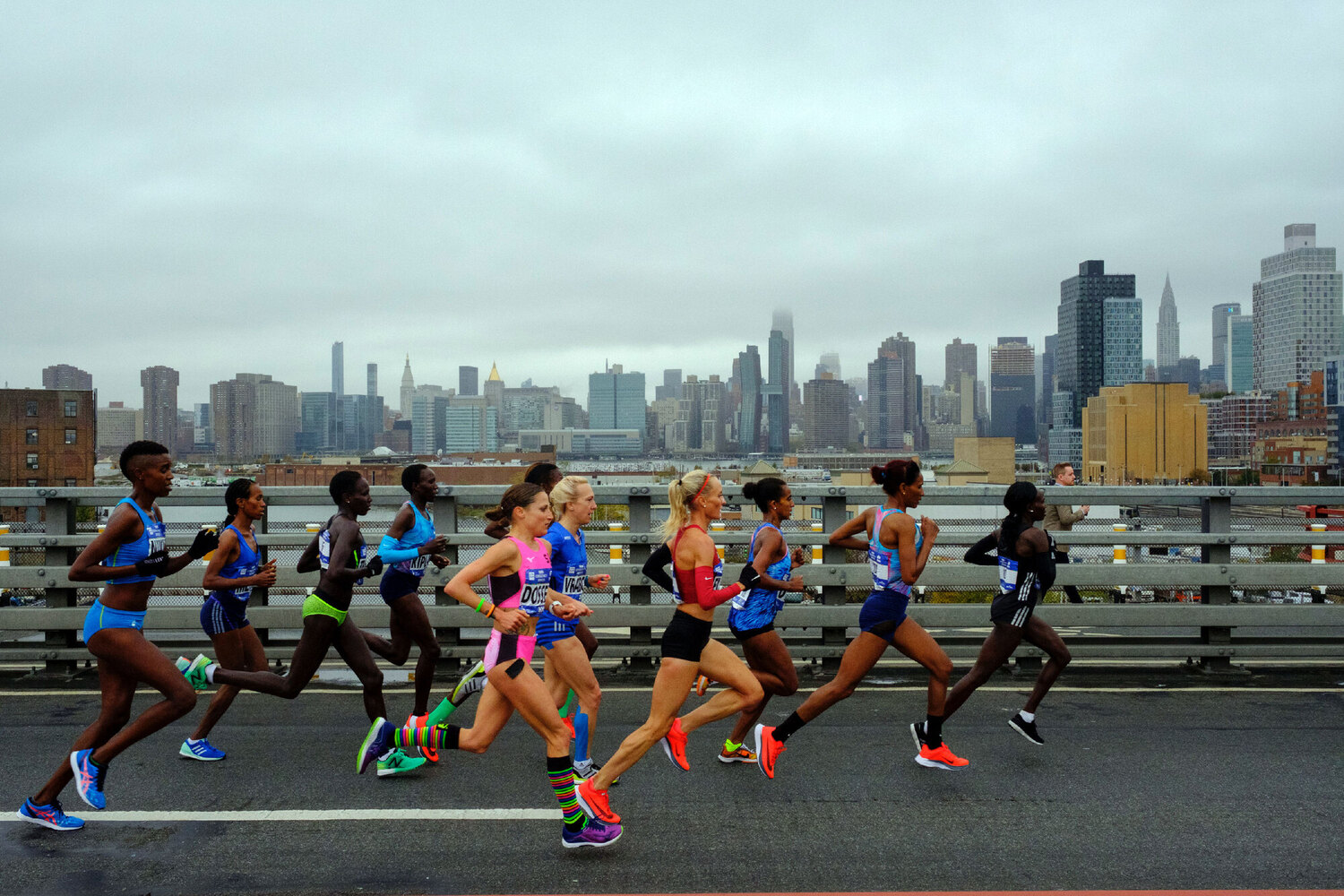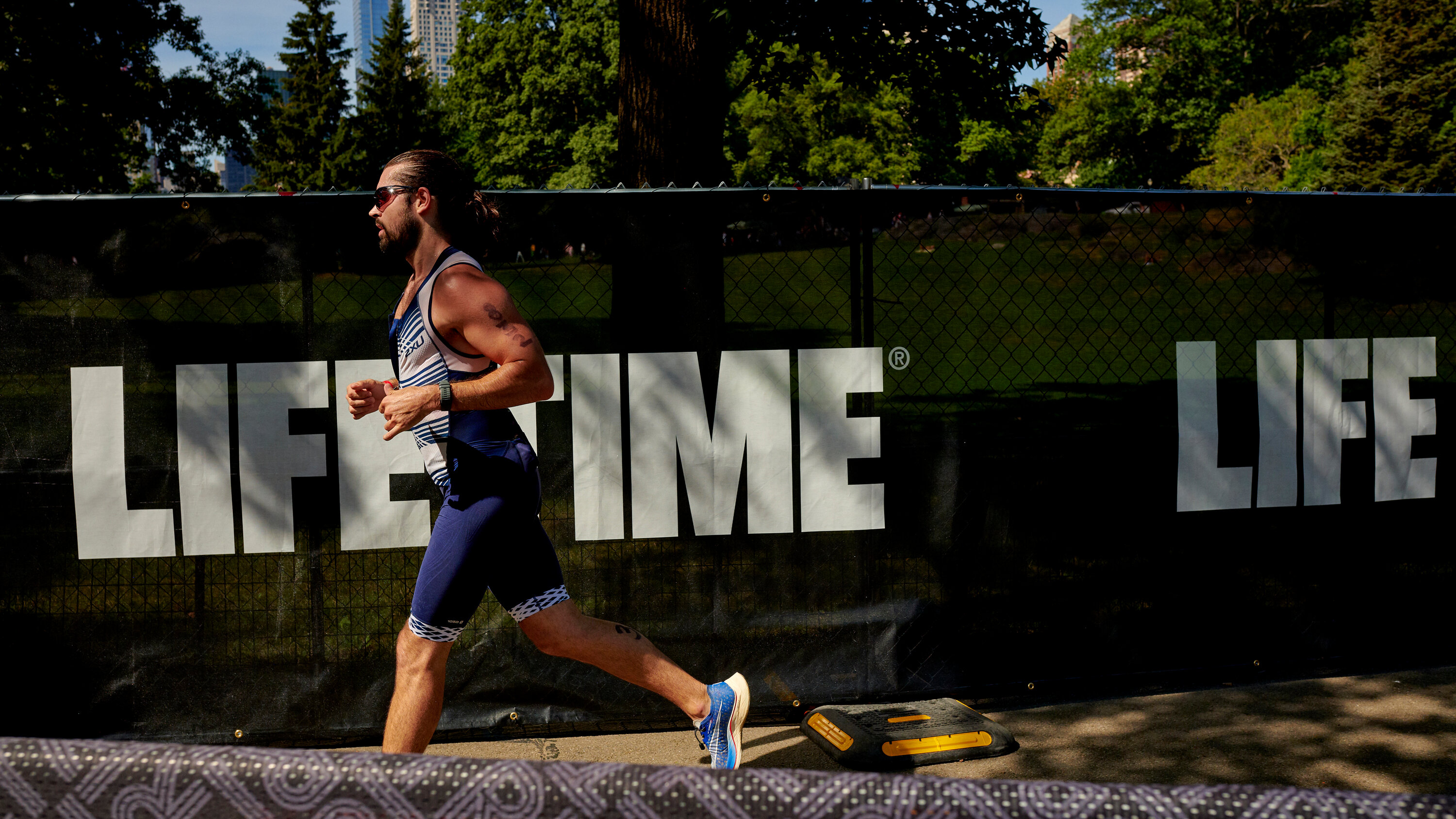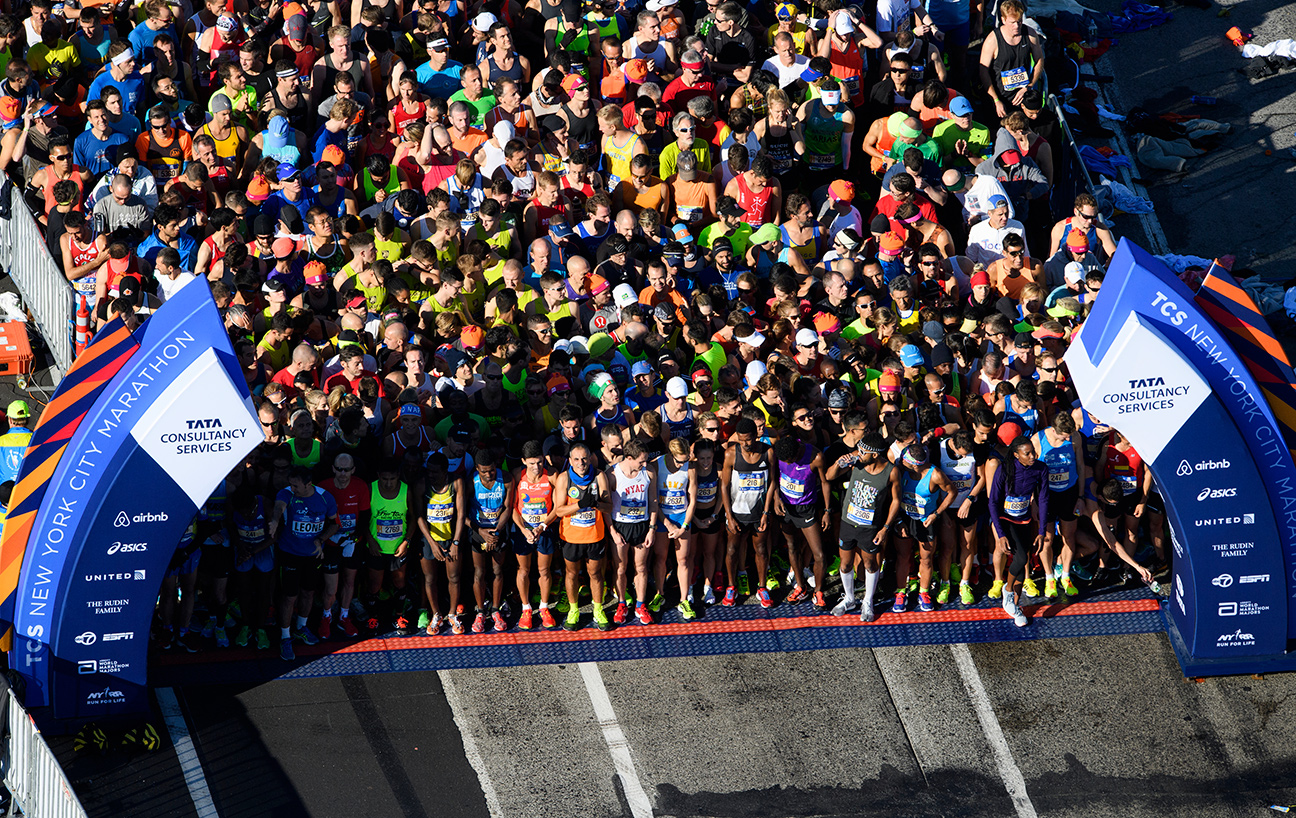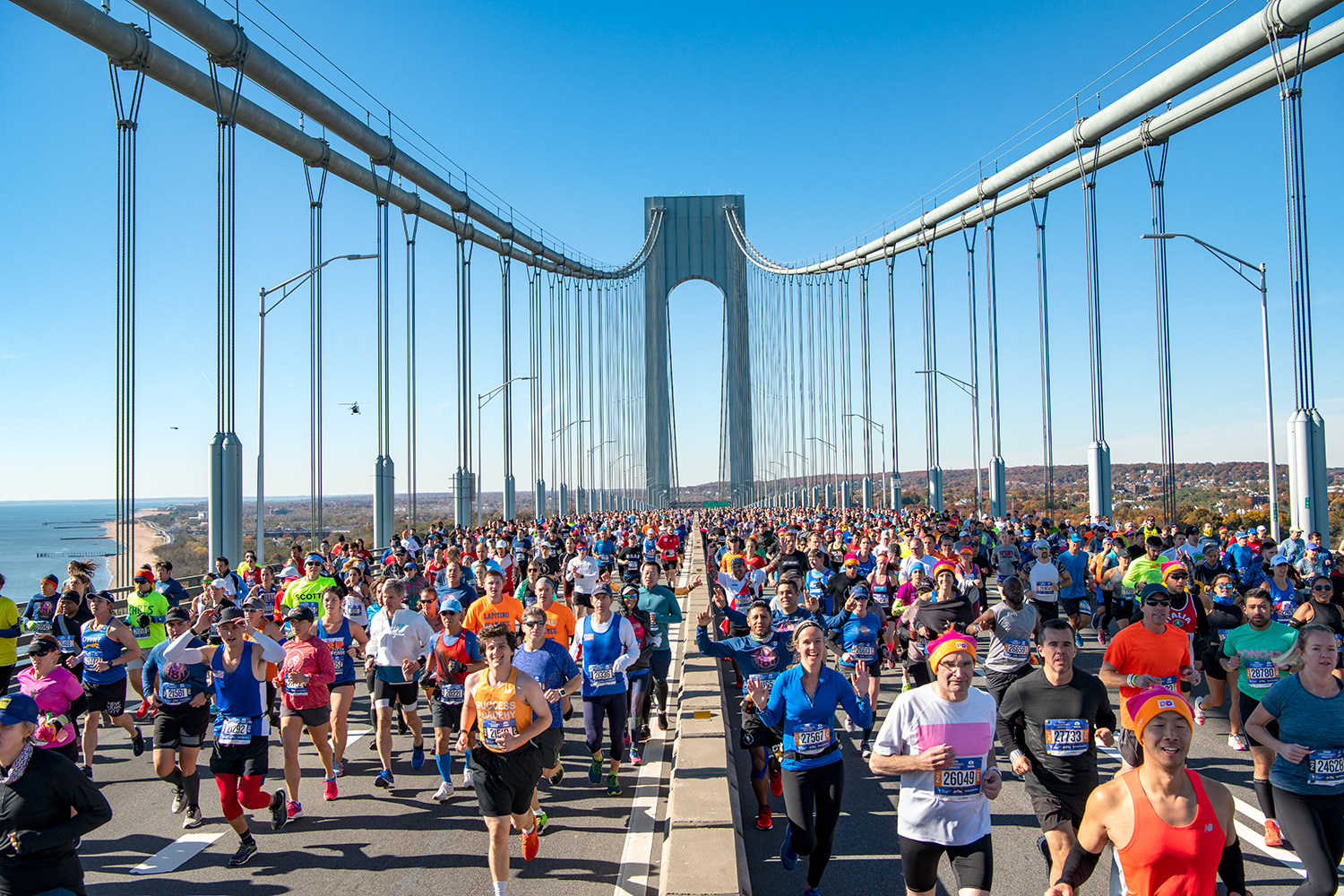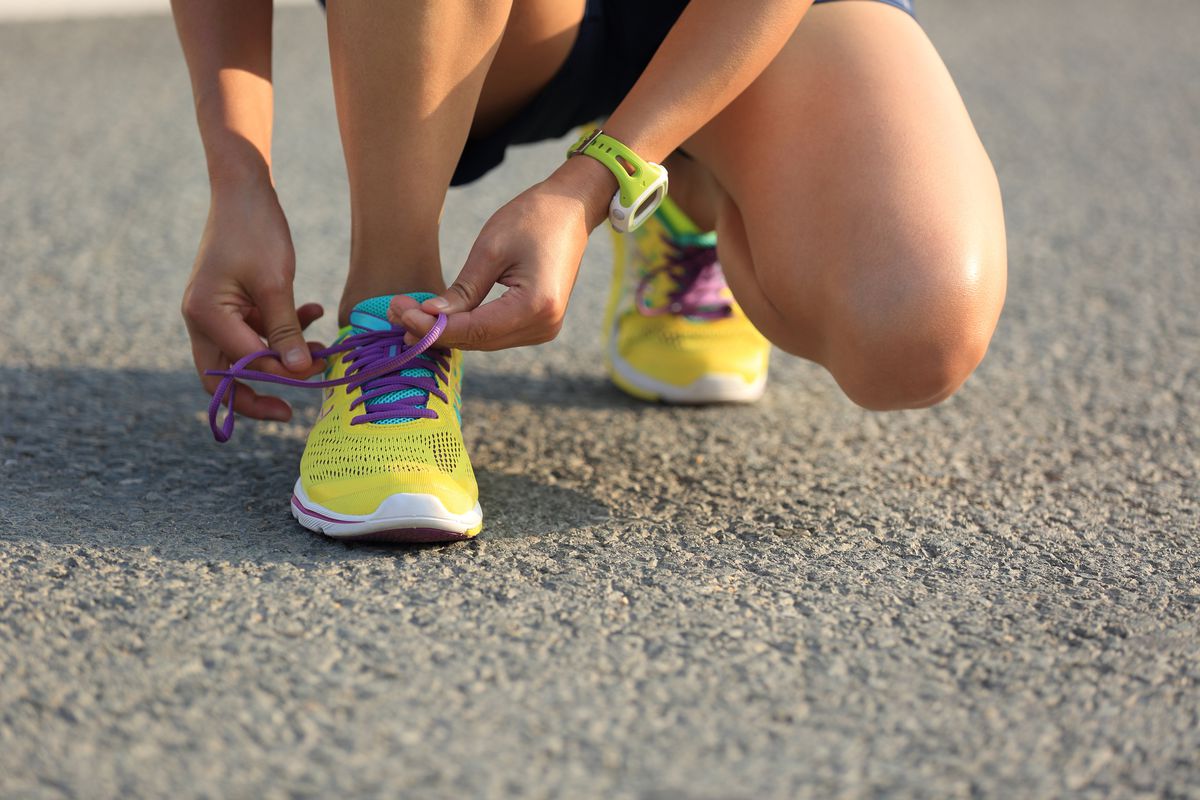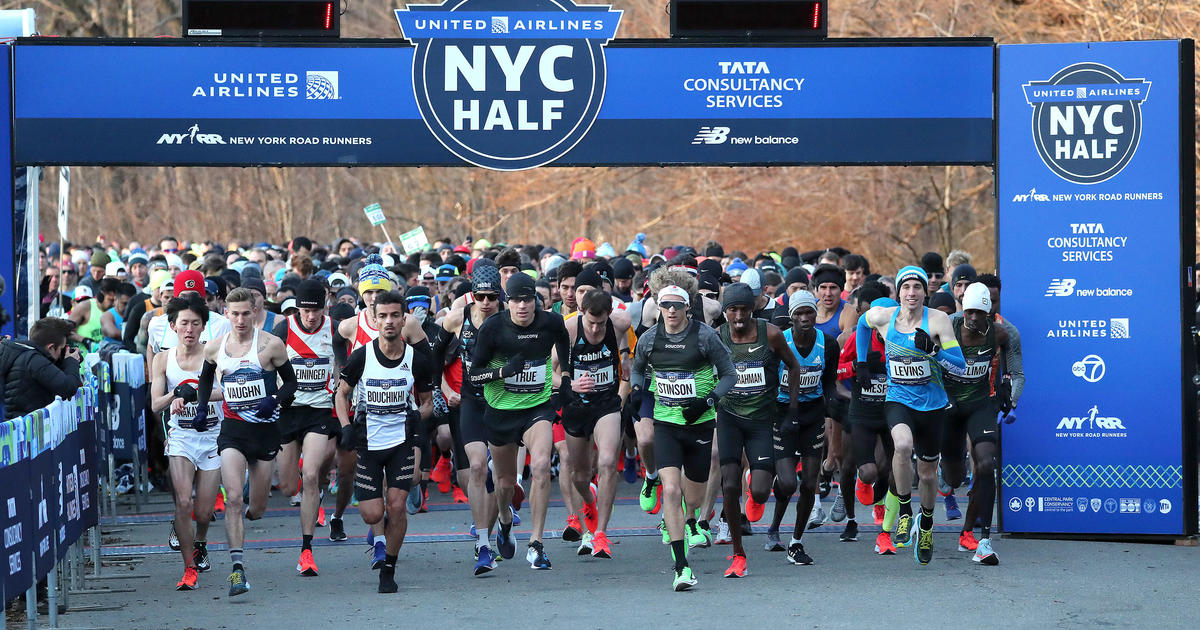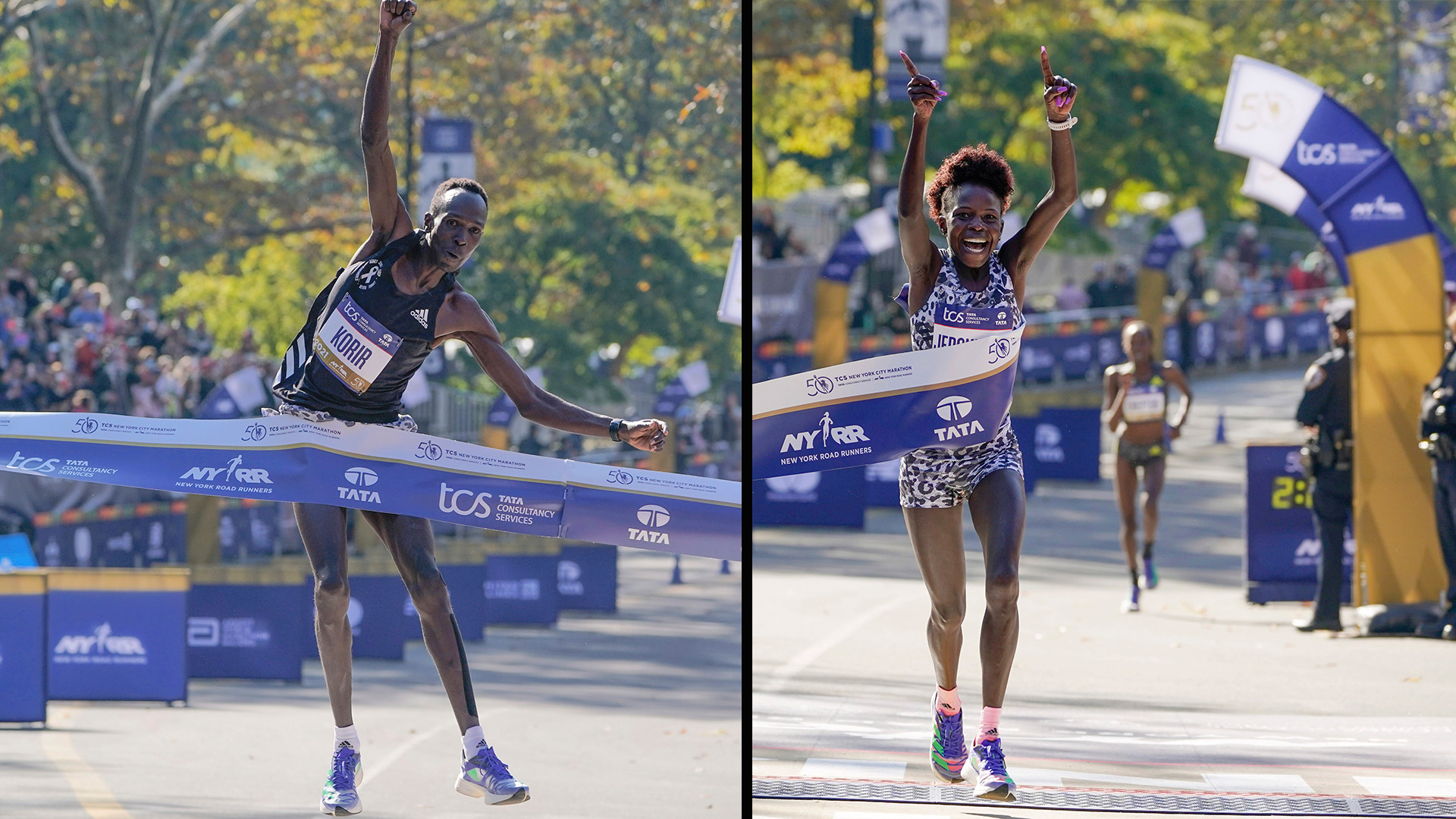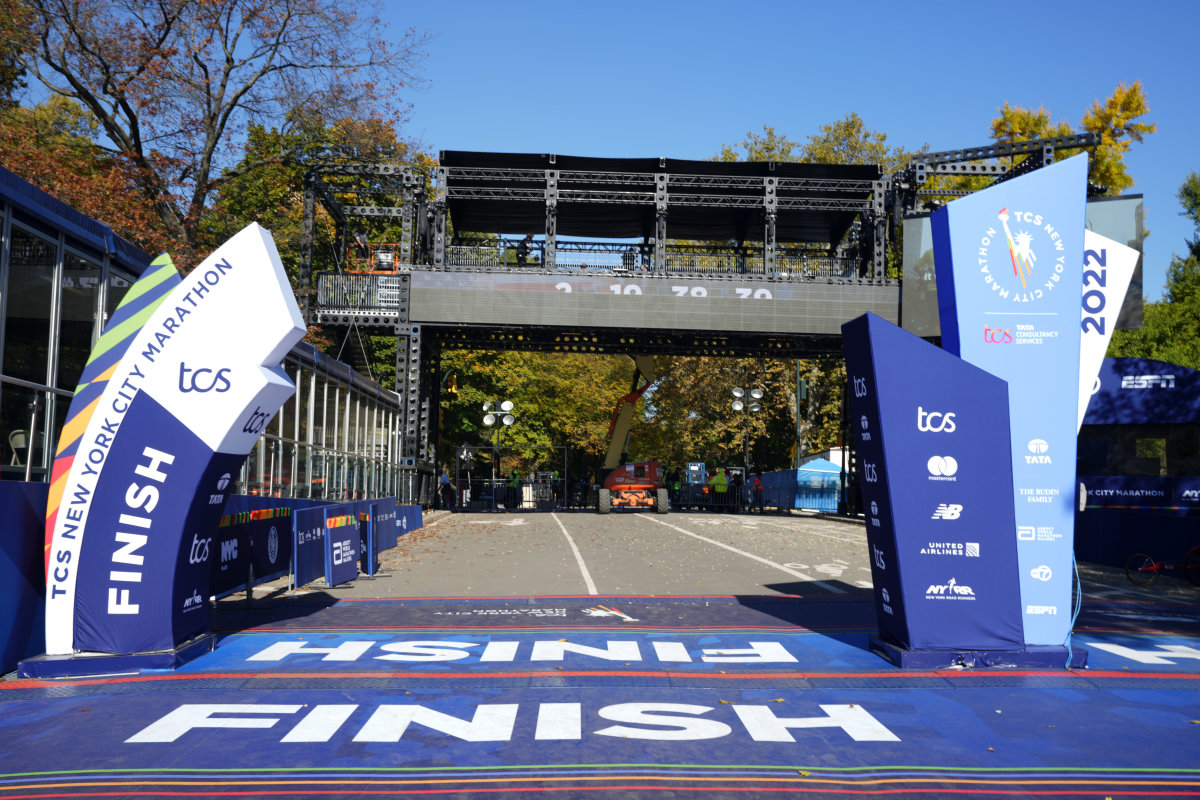

Featured
Where Does NYC Marathon End
Modified: January 2, 2024
Discover where the NYC Marathon ends with our featured guide. Uncover the thrilling conclusion of this iconic race in the heart of New York City.
Introduction
Welcome to the thrilling world of the New York City Marathon! An iconic event that brings together thousands of runners from all over the globe, this marathon is not only a test of physical endurance but also a celebration of human spirit and determination.
Spanning a distance of 26.2 miles, the NYC Marathon is renowned for its challenging course that takes participants through the vibrant neighborhoods of the city’s five boroughs. From the bustling streets of Staten Island to the towering skyscrapers of Manhattan, this marathon offers a unique and immersive experience like no other.
Whether you’re a seasoned runner or a novice looking to take on a monumental challenge, understanding the layout and details of the course is essential. In this article, we will guide you through the various sections of the NYC Marathon course, providing insights into the history, course highlights, and, of course, the all-important finish line location.
Join us as we embark on a virtual journey through the streets of New York City, exploring the twists and turns, the cheers of the spectators, and the indescribable sense of achievement that awaits at the end of this remarkable race.
History of the NYC Marathon
The New York City Marathon, often referred to as the “Big Apple’s biggest block party,” has a rich and storied history that spans over five decades. Originally held with a modest start in 1970, the marathon has grown into one of the world’s most prestigious and well-attended racing events.
It all began with just 127 runners, who took to the streets of New York City for the inaugural race. Organized by Fred Lebow and Vince Chiappetta, the first NYC Marathon was a series of loops around Central Park. Since then, the race has undergone significant changes in its route and format.
In 1976, the course was altered to include all five boroughs of New York City, transforming the marathon into a true citywide celebration. This change not only provided a more diverse and exciting experience for participants, but it also allowed spectators to cheer on the runners from various neighborhoods along the way.
Over the years, the NYC Marathon has witnessed some truly historic moments. In 1974, the event made history by allowing women to officially compete for the first time. This marked a significant milestone for equality in sports and paved the way for female athletes to excel in long-distance running.
The marathon has also seen the rise of legendary athletes who have left an indelible mark on the sport. From the dominance of Grete Waitz, who won the race an astonishing nine times between 1978 and 1988, to the captivating duel between Alberto Salazar and Dick Beardsley in 1982, the NYC Marathon has provided countless unforgettable moments for both participants and spectators alike.
Throughout its history, the NYC Marathon has become more than just a race. It has become a symbol of resilience, unity, and New York City’s unwavering spirit. The marathon has played a significant role in bringing the city together, particularly during challenging times.
For instance, following the tragic events of September 11, 2001, the marathon served as a rallying cry of defiance and hope. Runners from around the world lined up to show their support and solidarity with New York City, and the race became a symbol of strength in the face of adversity.
Today, the NYC Marathon continues to attract a diverse array of participants from elite runners to amateur enthusiasts, all united by the common goal of crossing the finish line in the heart of New York City. It is a testament to the enduring legacy of this event that it remains an iconic and highly anticipated race in the world of long-distance running.
Course Overview
The New York City Marathon course is renowned for its diverse and challenging terrain, taking participants on a journey through the five boroughs of the city. With its mixture of rolling hills, long straightaways, and iconic landmarks, the course presents both physical and mental challenges for runners of all levels.
Starting on Staten Island, the course begins with a dramatic view of the Verrazzano-Narrows Bridge, which serves as the gateway to the rest of the marathon route. Runners make their way across the bridge, experiencing the exhilarating feeling of running amidst the bustling energy of the city.
After crossing into Brooklyn, the course takes runners through residential neighborhoods filled with enthusiastic spectators cheering and offering encouragement. The streets come alive with music, and the vibrant atmosphere adds to the runners’ motivation.
Leaving Brooklyn, the course enters Queens via the Pulaski Bridge, where runners are greeted by breathtaking views of the Manhattan skyline. The enthusiastic crowd support continues as the participants pass through the bustling streets, creating an electric energy that propels them forward.
The course then crosses into the Bronx via the Willis Avenue Bridge, providing a change of scenery and an opportunity to draw inspiration from the local community. The cheers of the spectators and the lively atmosphere help fuel the runners as they enter the final stretch of the race.
Returning to Manhattan, the course takes runners along Fifth Avenue, passing iconic landmarks such as the Metropolitan Museum of Art and Central Park. The energy of the city and the support from the crowd reach a crescendo as runners make their way towards the grand finale.
Finally, the participants enter Central Park, where the final miles of the marathon unfold amidst the park’s serene beauty. The undulating hills test the endurance of the runners, but the breathtaking surroundings and the encouragement from the crowd provide the motivation to push through to the finish line.
As runners cross the finish line, a sense of accomplishment washes over them, knowing they have conquered the challenging NYC Marathon course. The journey through the city’s diverse neighborhoods, the iconic landmarks, and the electrifying support from the spectators make the NYC Marathon course a truly unforgettable experience.
The Start of the Race
The start of the New York City Marathon is a moment filled with anticipation, excitement, and nervous energy. Thousands of runners from all over the world gather on Staten Island, ready to embark on their 26.2-mile journey through the city’s vibrant streets.
Organized in waves to ensure a smooth and efficient start, the participants are grouped based on their qualifying times or assigned based on their selected corral. As the sun rises over the Verrazzano-Narrows Bridge, the starting line comes alive with the sound of music, cheers, and the buzz of anticipation.
Each wave is led by a group of elite runners, setting a blazing pace that serves as both inspiration and motivation for those following behind. As the countdown begins, runners take their final deep breaths, mentally preparing themselves for the challenges that lie ahead.
With the sound of the starting gun, the marathon officially begins. The participants surge forward, their strides synchronized with the beats of their racing hearts. The euphoria of the start is palpable, and runners feed off the energy of the crowd lining the streets, cheering them on every step of the way.
As the runners make their way across the Verrazzano-Narrows Bridge, they experience the roar of enthusiastic spectators who have gathered to witness the marathon’s iconic start. The view from the bridge is awe-inspiring, with panoramic vistas of the New York Harbor and the city skyline in the distance.
As they descend from the bridge and enter Brooklyn, the atmosphere becomes even more electrifying. The streets are lined with supporters offering high-fives, holding up motivational signs, and providing much-needed encouragement to the runners. The camaraderie among participants is evident as they exchange smiles and words of encouragement, united by their shared goal of conquering the challenging course.
The start of the New York City Marathon is not just a physical event; it is a celebration of the human spirit and a testament to the power of determination. The beginning moments set the tone for the entire race, igniting a fire within each participant to push beyond their limits and embrace the journey that lies ahead.
As the race progresses, the memories of the start linger in the minds of the runners, serving as a reminder of the incredible experience that awaits them at the finish line. The start may be just the beginning, but it is undoubtedly one of the most exhilarating and memorable moments of the New York City Marathon.
The First Half of the Course
The first half of the New York City Marathon course is a thrilling journey through the diverse neighborhoods of Staten Island, Brooklyn, and Queens. As runners make their way across the Verrazzano-Narrows Bridge and onto the streets below, they are greeted with the energy and excitement of the enthusiastic crowd.
Leaving Staten Island behind, participants enter Brooklyn, where the course takes them through vibrant and culturally rich neighborhoods. The cheers of spectators echo through the streets as runners pass by local shops, cafes, and brownstone-lined blocks.
One of the highlights of the first half of the course is the iconic stretch of Fourth Avenue, known for its tree-lined streets and enthusiastic crowds. Spectators line the sidewalks, offering words of encouragement and cheering on the determined runners.
The course then leads runners into the bustling borough of Queens via the Pulaski Bridge. The view of the Manhattan skyline serves as a breathtaking backdrop, inspiring participants to push forward and embrace the challenges that lie ahead.
In Queens, the course takes runners through neighborhoods rich in cultural diversity, providing a glimpse into the vibrant fabric of the city. From Long Island City’s industrial charm to the residential streets of Sunnyside, runners are greeted with an array of sights and sounds that add to the vibrant atmosphere of the race.
The first half of the course is not without its challenges. The gradual inclines and descents, combined with the constant energy exerted by runners, test their physical and mental endurance. However, the support from the crowds and the camaraderie among participants create a sense of unity and determination that drives them forward.
As the runners approach the halfway point, they are met with encouragement from the cheering spectators, reminding them of the distance they have conquered and the distance that still lies ahead. With every step, the enthusiasm of the crowd and the support from fellow participants propel them toward the next phase of the race.
The first half of the New York City Marathon course showcases the spirit of the city, from the resilient neighborhoods of Brooklyn to the cultural melting pot of Queens. The diverse landscapes, enthusiastic spectators, and the shared determination of runners lay the foundation for an unforgettable and transformative race experience.
Crossing the Boroughs: Brooklyn, Queens, and the Bronx
One of the most exhilarating aspects of the New York City Marathon is the opportunity to cross through the diverse boroughs of Brooklyn, Queens, and the Bronx. As runners leave behind the vibrant streets of Staten Island, they embark on a journey that showcases the unique character and energy of each borough.
Entering Brooklyn, participants are greeted by the cheers and supportive shouts of enthusiastic spectators lining the streets. This borough is known for its lively neighborhoods, and runners are immersed in the cultural tapestry of the city as they make their way through the diverse communities.
Brooklyn offers a visual feast for the runners, with its tree-lined streets, brownstone homes, and distinctive architecture. From the iconic stretch of Fourth Avenue to the energizing atmosphere of Williamsburg, the borough presents a unique blend of scenic beauty and vibrant city life.
As runners cross into Queens via the Pulaski Bridge, they are welcomed by stunning views of the Manhattan skyline. The energy of the crowd intensifies as participants pass through the bustling neighborhoods, such as Long Island City and Astoria.
Queens is famously diverse, and the marathon course reflects this diversity as participants run through neighborhoods that showcase the cultures and traditions of communities from around the world. From the aromatic flavors of ethnic eateries to the eclectic mix of music and art, runners experience a true melting pot of cultures.
The marathon route then takes runners into the Bronx, where they cross the Willis Avenue Bridge. Stepping into this borough brings a change of scenery and a chance to draw inspiration from the local community. The cheering and support from the spectators in the Bronx provide an extra boost of energy to propel the runners forward.
The Bronx is known for its vibrant spirit, and runners experience the authentic energy of the borough as they pass through its streets. The cheers of the locals and the lively atmosphere create an electric buzz that encourages participants to persevere and continue towards the finish line.
These boroughs symbolize the heart and soul of New York City, each offering its own unique blend of cultures, energy, and community spirit. The marathon serves as a tribute to the diversity and unity that define the city, allowing runners and spectators alike to connect with the rich tapestry of New York City’s neighborhoods as they progress through the race.
The Final Stretch: Manhattan and Central Park
As runners approach the final stretch of the New York City Marathon, they enter the iconic borough of Manhattan, setting the stage for an unforgettable finish. With its towering skyscrapers, world-famous landmarks, and the serene beauty of Central Park, this section of the course is filled with anticipation and determination.
Leaving the vibrant streets of the Bronx behind, participants make their way across the Madison Avenue Bridge, entering Manhattan to a chorus of cheers from the spirited crowds. The energy of the spectators fuels the runners as they continue their journey towards the finish line.
Running along Fifth Avenue, participants pass by legendary landmarks such as the Metropolitan Museum of Art and Central Park. The iconic sights serve as a reminder of the enduring legacy and cultural significance of the city.
The atmosphere along the course is electric, with spectators lining the streets, waving flags, and cheering on the runners. The energy from the crowd becomes infectious, pushing the participants to dig deep and find that last surge of energy.
As the course leads runners closer to Central Park, the lush greenery and peaceful surroundings provide a welcome respite from the bustling city streets. The undulating hills of the park present a final challenge for the runners, testing their physical and mental strength.
But as participants navigate the twists and turns of Central Park’s tree-lined paths, they are met with support and encouragement from the enthusiastic spectators. The familiar sounds of cheering and the sight of fellow runners pushing towards the finish line serve as a reminder of the collective goal they all share.
The final stretch of the race is a symbol of determination and triumph. Every step brings runners closer to achieving their goal and making their mark in the history of the New York City Marathon.
As the finish line comes into view, the cheers of the crowd grow louder, fueling that final surge of adrenaline. The triumphant feeling of crossing the finish line is unmatched, a culmination of weeks, months, and even years of preparation and dedication.
For those lucky enough to complete the grueling race, the finish line represents an incredible achievement. It signifies not only the physical accomplishment of completing 26.2 miles but also the indomitable human spirit and the power of setting and achieving goals.
The final stretch through Manhattan and Central Park captures the essence of the New York City Marathon. It is a celebration of human resilience, a testament to the city’s vibrant spirit, and a reminder of the transformative power of the marathon experience.
Finish Line Location
The finish line of the New York City Marathon is a place of celebration, triumph, and overwhelming emotion. Located in the heart of Central Park, this iconic spot serves as the culmination of the 26.2-mile journey that runners from around the world undertake.
As participants approach the finish line, the energy and excitement in the air are palpable. The cheers of the crowd grow louder, encouraging runners to summon every last ounce of strength for that final push.
The finish line is strategically positioned at the end of Central Park’s West Drive, near Tavern on the Green. This picturesque location provides a stunning backdrop for the triumphant moment, with the park’s lush greenery and serene beauty surrounding the participants as they cross the line.
Finishing the New York City Marathon is an achievement that runners have dedicated themselves to for months or even years. As they cross the finish line, a wave of emotions washes over them – a mix of exhaustion, exhilaration, and pride.
Runners are greeted with cheers, applause, and the sounds of their names being announced over the loudspeakers, creating a personalized and unforgettable experience. Volunteers hand out medals, a tangible symbol of their accomplishment, further emphasizing the magnitude of the moment.
Friends, family, and fellow runners gather at the finish line, offering hugs, high fives, and words of congratulations. The atmosphere is filled with camaraderie, as participants share stories of their journey, the challenges they overcame, and the sense of fulfillment they now feel.
The finish line area is also filled with various amenities to support and celebrate the runners. From medical tents providing post-race care to recovery areas offering massage and stretching services, every effort is made to ensure the well-being of the participants as they bask in the joy of completing the marathon.
After crossing the finish line, runners have the opportunity to reunite with their loved ones and celebrate their accomplishment. Central Park offers the perfect setting for post-race festivities, providing a serene and scenic space for reflection and relaxation.
The finish line of the New York City Marathon represents so much more than the end of a race. It is a testament to the human spirit, resilience, and unwavering determination. It is a moment of personal triumph and an achievement that will be cherished forever.
For every participant who crosses the finish line, the experience is unique and deeply personal. It is a culmination of their physical and mental strength, their dedication, and their unyielding spirit. The finish line of the New York City Marathon is a place where dreams become a reality and where memories are etched in the hearts of all those who have had the privilege to conquer this extraordinary race.
Conclusion
The New York City Marathon is not just a race; it is a true celebration of the human spirit, bringing together thousands of runners from all walks of life to conquer the iconic 26.2-mile course. From the historic starting line on Staten Island to the breathtaking finish in Central Park, every step of the journey is filled with exhilaration, determination, and a sense of unity.
Throughout its rich history, the NYC Marathon has evolved into a symbol of resilience, camaraderie, and the indomitable spirit of New York City. The course takes runners through the vibrant neighborhoods of each borough, showcasing the city’s diverse cultures and communities.
From the moment the race begins, the energy of the crowd and the support of fellow participants propel runners forward, encouraging them to push beyond their limits. Each step signifies the strength, dedication, and unwavering commitment it takes to complete such a monumental challenge.
The course itself is a testament to the city’s iconic landmarks, with runners passing world-famous sites such as the Verrazzano-Narrows Bridge, Fifth Avenue, and the serene beauty of Central Park. From the cheers of the spectators lining the streets to the camaraderie formed among participants, the NYC Marathon is a testament to the unique and powerful experience of long-distance running.
As runners cross the finish line, a profound sense of achievement washes over them. The journey from start to finish represents weeks, months, or even years of training, discipline, and perseverance. It is a moment of personal triumph, where dreams are realized and limits are shattered.
But beyond the individual victories, the New York City Marathon is a celebration of community. It brings together people from different backgrounds, cultures, and experiences, all united by their shared love for running and their desire to conquer one of the most challenging marathons in the world.
The impact of the NYC Marathon reaches far beyond the race itself. It inspires countless others to chase their own goals, embrace challenges, and push beyond their limits. It serves as a reminder that the human spirit is unyielding and that with determination and perseverance, anything is possible.
So, whether you’re a seasoned runner looking to add the New York City Marathon to your list of achievements or someone considering taking on the challenge for the first time, remember that this race is not just about reaching the finish line. It’s about the journey, the connections made along the way, and the exhilarating feeling of pushing yourself to new heights.
The New York City Marathon is a true testament to the power of the human spirit and the unique bond that running creates. It’s an experience that will leave an indelible mark on your life, reminding you of the incredible feats you’re capable of achieving.
